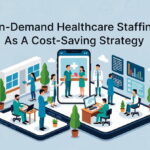Healthcare organizations have a lot on their plate at all times, from providing the best possible care and treatment to their patients to making sure everything is following procedure. If you’re a healthcare provider, you know how challenging it is to manage all these things.
As if all this wasn’t challenging enough, you also have to deal with another vital aspect of the healthcare industry – ensuring patient data security.
Patient data security is a top priority for healthcare organizations. With the increasing number of data breaches in the healthcare industry, it has become more important than ever to ensure the protection of sensitive patient information.
Here are a few things you, as a healthcare service provider or organization, can do to ensure better data security for your patients.
#1 Implement a Strong Security Framework
The first and arguably most important step to ensuring better security for your patient data is to implement a strong security framework.
A security framework is nothing but a set of guidelines and policies specifically designed to protect sensitive information like your patient data. It includes measures such as access control, encryption, monitoring, and incident response. The framework should be based on industry best practices and tailored to your organization’s specific needs.
One widely accepted security framework is the National Institute of Standards and Technology (NIST) Cybersecurity Framework. This framework provides a comprehensive set of guidelines that healthcare organizations can follow to protect their data from cyber threats. Its five core functions are to identify, protect, detect, respond, and recover.
#2 Conduct Regular Security Audits
Regular security audits are essential for identifying vulnerabilities in your organization’s security framework. These audits should be conducted by qualified professionals who have expertise in healthcare data security. The audit should include a comprehensive review of your organization’s systems and processes, including access control, data storage, and data transmission.
The audit should also include an assessment of your organization’s compliance with relevant regulations. It should also check whether or not your security framework is updated to tackle the latest threats.
When it comes to data-driven decision-making in the health services industry, patient data security and privacy should be prioritized above everything else. When talking about the impact of patient data in healthcare decision-making, Tulane University School Of Public Health And Tropical Medicine explains that people are often hesitant to provide their data to healthcare service providers in the first place because they’re concerned about their data security and privacy.
Therefore, you need to address those issues, and the best way to do so is by showing your patients that you’re conducting regular security audits to make sure that there are no security breaches or loopholes that can compromise their data.
#3 Train Your Employees
When it comes to ensuring security for patient data, you can’t ignore the need to train your employees. Training your employees on data security best practices is essential for reducing the risk of compromising your patient data.
All the employees of your healthcare organization must be trained on the organization’s security policies, including password management, access control, and data handling procedures. They should also learn about malicious threats, email handling practices, etc.
Besides, employees who have direct access to patient data should undergo additional training so that they don’t take any step that can potentially jeopardize entire data servers.
#4 Implement Data Encryption
Data encryption is one of the most effective ways to protect sensitive patient data. Through encryption, you can, in a way, hide your patient data in plain sight. That means even if someone managed to steal the data, they’d still have to find a way to decrypt the data before they can use or even understand it.
#5 Use Two-Factor Authentication
As you know, two-factor authentication (2FA) always requires users to provide at least two forms of identification before they can access the data. This can include everything from two passwords to two physical keys or a combination of the two. The idea is that even if someone had one of the keys to steal the data, they’d still fail to do so because they need at least two passwords or keys for this.
By the time they manage to work out the other one, your organization will likely be alerted that someone is trying to steal patient information.
2FA is a must for those who handle patient data directly.
While you can never stop upgrading your security features, the five suggestions listed above should have your healthcare organization covered for now as well as in the near future. However, as time progresses, you must look back on your current security state and make necessary changes.
Read Also
- Hardened shelter solutions reshape how military operations stay safe and functional in the fieldDifficult terrain, unpredictable threats and long deployments have driven modern militaries to reconsider how they create safe, reliable spaces in the field. Rigid wall shelters and container-based structures are becoming the quiet backbone of operations, offering durability, mobility and real comfort for the troops and support teams. When most people think of military bases, they… Read more: Hardened shelter solutions reshape how military operations stay safe and functional in the field
- The Function of a CRO for Clinical Trials: Structure, Responsibilities, and Operational ImpactClinical trials rely on organized systems that ensure scientific validity, participant protection, and regulatory compliance. As protocols become more intricate and studies expand across multiple regions, many sponsors collaborate with specialized partners to manage key operational and methodological tasks. A CRO for clinical trials provides this structured support, coordinating the activities required to move a study from… Read more: The Function of a CRO for Clinical Trials: Structure, Responsibilities, and Operational Impact
- Innovative Strategies for Marketing Neuropathy TreatmentsLiving with neuropathy can be difficult, both physically and mentally. As a healthcare professional, you see how much it affects your patients and how important it is to find treatments that truly help. But with new medical updates and a fast-changing digital world, marketing neuropathy treatments can feel overwhelming. This is where fresh, practical strategies… Read more: Innovative Strategies for Marketing Neuropathy Treatments
- Revolutionizing Patient Engagement: Innovative Solutions for Improved Care and Treatment SuccessNavigating healthcare system can often feel overwhelming for patients. Between appointments, prescriptions, and treatment regimens, it’s easy for crucial details to get lost in the shuffle. That’s why effective patient engagement and support solutions are more important than ever. Companies like Serva Health, with their pharma hub services, are stepping up to ensure that patients… Read more: Revolutionizing Patient Engagement: Innovative Solutions for Improved Care and Treatment Success
- On-Demand Healthcare Staffing As A Cost-Saving StrategyThis is an exciting and challenging time for the healthcare industry. Technology is advancing almost faster than humans can keep pace. New legislation is creating fresh challenges for the future of healthcare, and the shifting population demographic continues to place more pressure on healthcare facilities. Amidst these changes, healthcare facilities are facing a critical staffing… Read more: On-Demand Healthcare Staffing As A Cost-Saving Strategy






